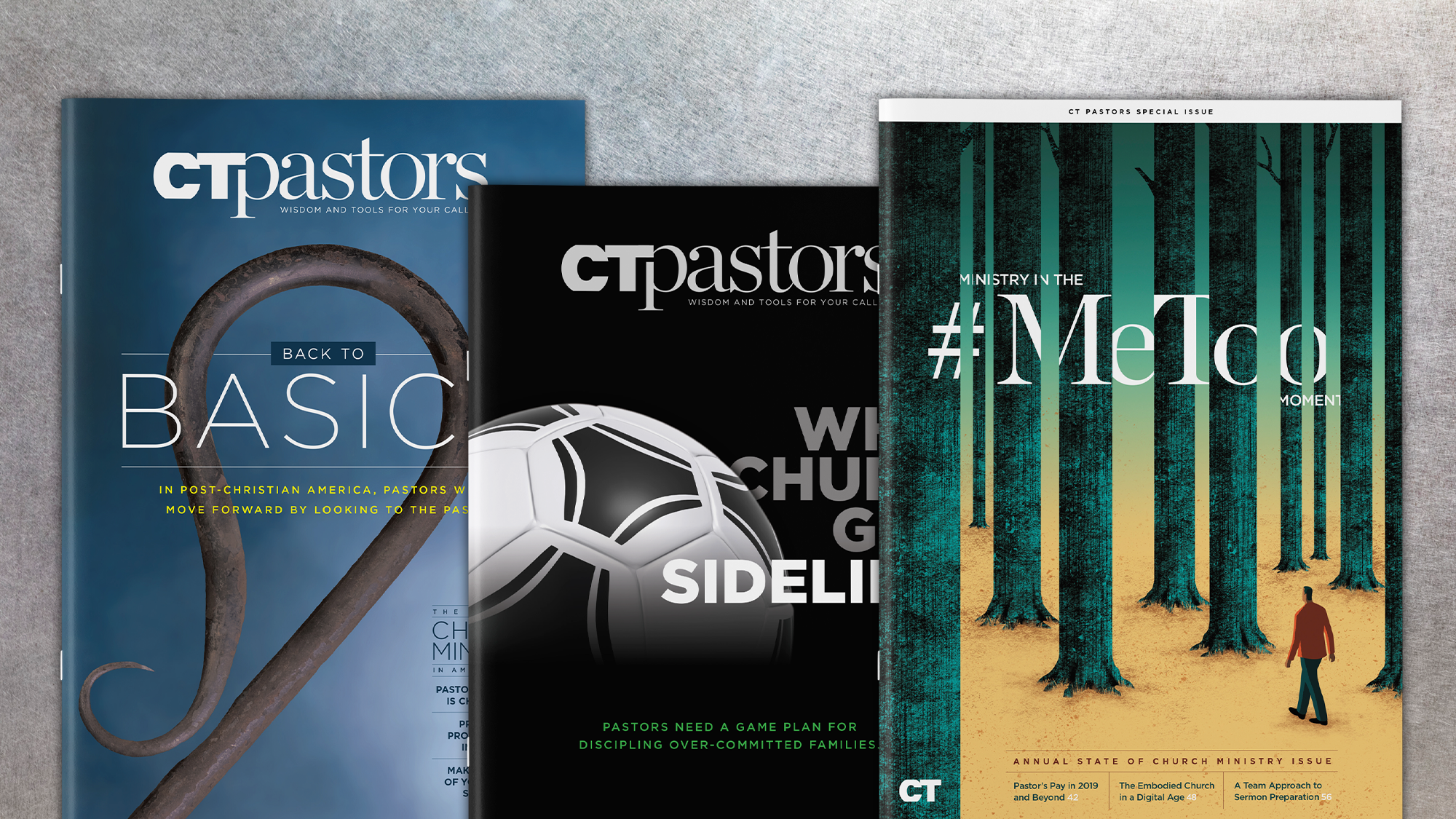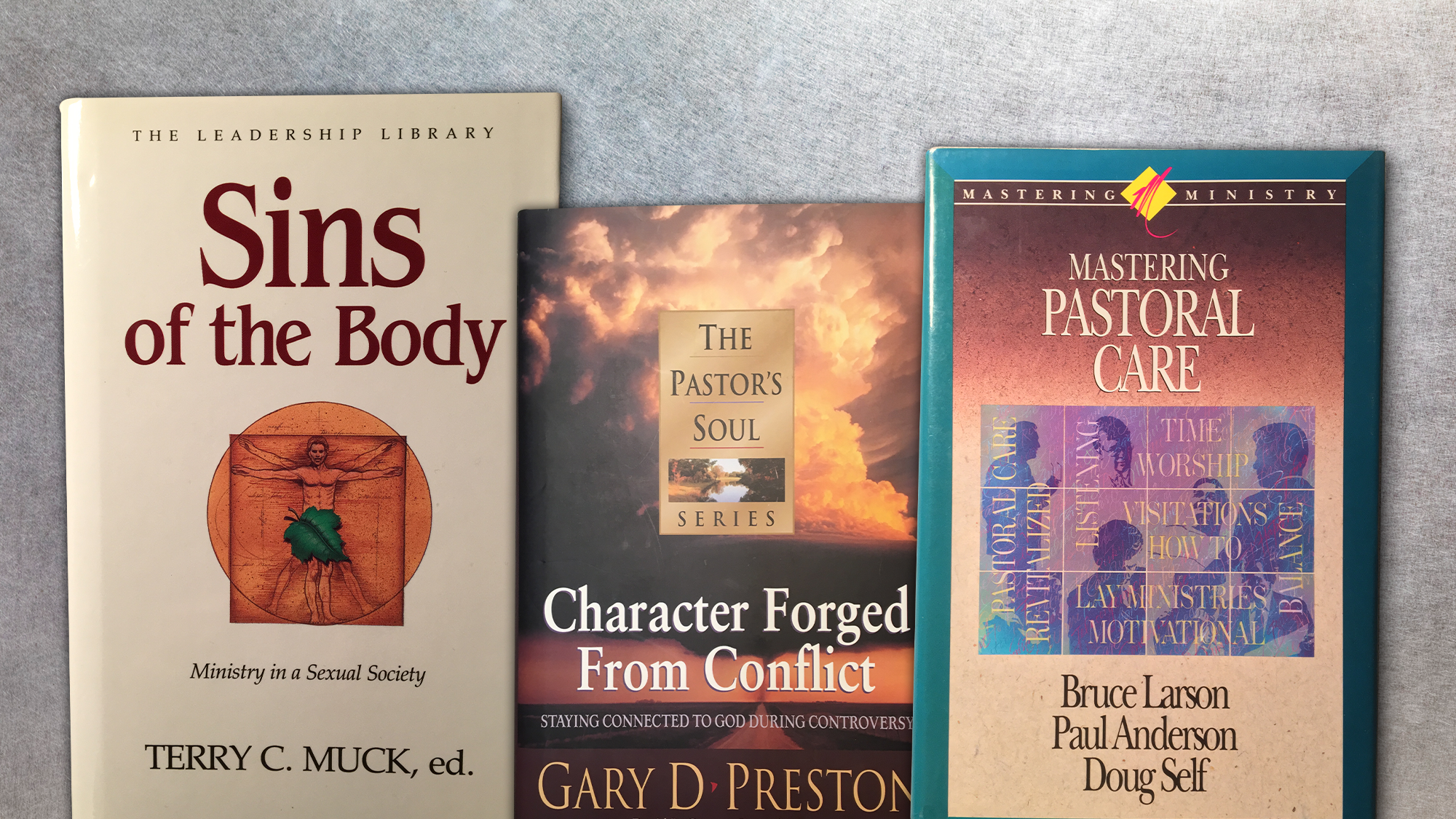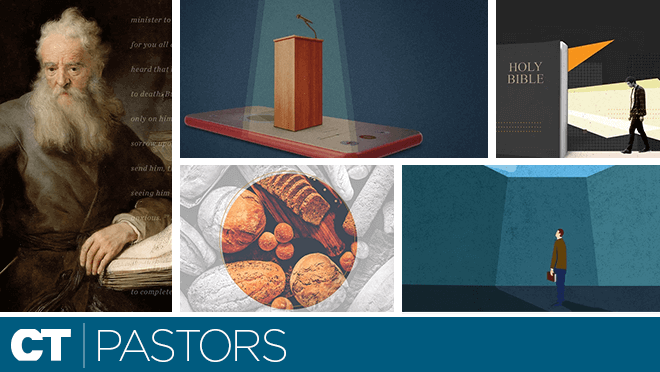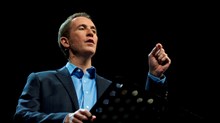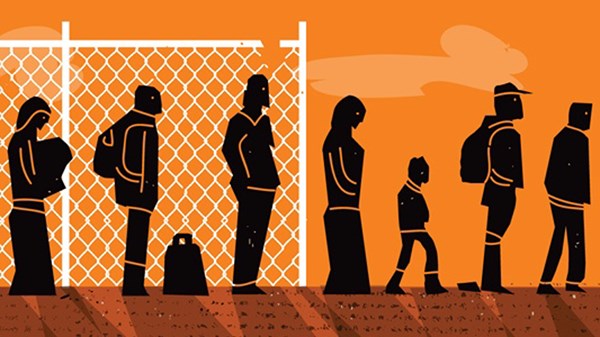
I wince at the image of three-year-old Alan Kurdi, washed ashore on a Turkish beach one year ago. Or of five-year-old Omran Daqneesh, bloodied and dusty after surviving a bombing in Aleppo. I think of my own one-year-old son—he wears little Velcro shoes like Alan’s and has mop-like hair like Omran’s—and my heart breaks.
Then I begin to contemplate the terror that forces people to flee, and I am struck by a sense of fear, resolved not to let such violence reach my country—and my child.
A Conflicted Country
The United States, as a nation, has likewise been driven variously by both compassion and fear in its response to immigrants. There have always been voices insisting that the United States was a nation of immigrants ready to welcome others, even while others believed that the arrival of new immigrants was a menace threatening the country—with the center of public sentiment vacillating between these two competing narratives. These debates go back to the colonial era: Benjamin Franklin once fretted that the German immigrants arriving in Pennsylvania would “never adopt our [British] Language and Customs” and would “shortly be so numerous as to Germanize us rather than our Anglifying them.” His concerns about cultural assimilation have been echoed, by at least some element of the population, in regard to just about every subsequent wave of immigrants.
Yet there have always been others who welcomed newcomers: George Washington, for example, told a crowd of early Irish immigrants that the newly independent United States was “open to receive not only the opulent and respectable stranger, but the distressed and persecuted of all nations and religions.”
A century later, Emma Lazarus penned a sonnet whose words would eventually be engraved at the base of the Statue of Liberty, welcoming new migrants into New York Harbor:
Give me your tired, your poor,
Your huddled masses yearning to breathe free…
Send these, the homeless, tempest-tost to me,
I lift my lamp beside the golden door!
Approximately 40 percent of Americans can trace their ancestry through the US immigration processing center at Ellis Island around the turn of the 20th century. For many of that 40 percent, these words summarize the magnanimous welcome of the United States toward immigrants of the era; influenced by stories passed down from one generation to another and by portrayals in popular media, we tend to romanticize the experience of the immigrants of this era. We forget the disdain with which many of these immigrants were met.
In 1882, in response to growing anti-immigrant sentiment among American voters, Congress passed some of the earliest federal restrictions on who could immigrate to the United States: restrictions that excluded “any lunatic, idiot, or any person unable to take care of himself or herself without becoming a public charge,” which closed the doors to many of those tired, poor, huddled masses.
The same year, following a congressional committee’s racially charged conclusion that European races were “far superior to the Chinese” and that the Chinese lacked “sufficient brain capacity… for self-government,” President Chester Arthur signed the Chinese Exclusion Act, which forbade the migration of Chinese laborers until its repeal in 1943.
Lazarus’s poetic words of welcome were written just around the time that, in the words of historian Roger Daniels, “the golden doorway of admission to the United States began to narrow.” Over the next several decades, further and further restrictions were added, culminating in the early 1920s with the passage of the National Origins Quota Act. For the first time in US history, immigrants were required to apply for a visa before migrating to the United States and the vast majority of those visas were reserved from those from preferred counties of origin in Northern and Western Europe: intentionally cutting off the migration of the Italians, Poles, and Russians who had formed the largest groups of immigrants during most of the Ellis Island era.
While subsequent reforms—most notably in 1965—shifted US immigration policy away from this preference for particular nationalities (instead prioritizing those with family ties or employable skills), debates over whether more or fewer immigrants should be allowed into the country and over the criteria used to distribute immigrant visas continue.
A Conflicted Church
The full range of attitudes toward immigration has been represented within American churches, as well, particularly among evangelical Christians for whom—throughout much of American history—the arrival of immigrants has meant an increasing number of people of other religious traditions. Some saw the arrivals as an evangelistic opportunity. Others saw a threat to Protestant Christianity’s status as the country’s dominant religious tradition. At times, evangelical Christians have stood heroically for immigrants; in other moments, however, they have led the anti-immigrant charge.
At multiple points between the mid-19th and early 20th centuries, anti-Catholic sentiment was the primary factor governing evangelical attitudes toward immigrants—especially the German and (particularly) Irish immigrants who arrived in the first “great wave” of European migration, between 1820 and 1860, and later the Italians and Poles who arrived during the Ellis Island era. While some evangelicals sought to convert Catholic newcomers to their Protestant theology, the primary concern of most evangelicals was maintaining Protestant cultural hegemony, not the souls of the immigrants themselves. Thus, by the 1890s, most evangelicals were solidly in support of immigration restrictions.
As historian William Phalen notes in his bookAmerican Evangelical Protestantism and European Immigrants, 1800-1924, most evangelicals of the 1850s “were convinced that Catholicism was, at its core, a hostile conspiracy that threatened both Protestantism and the American way of life.” Many, notes historian Tyler Anbinder, were drawn to the harshly anti-Catholic Know Nothing movement, whose antagonism toward Catholics was grounded in their conviction that the Catholic faith was wholly incompatible with American principles, such that “papist” immigrants could not possibly become loyal Americans. (Messiah College historian John Fea observed recently that, if you replace “Romanism” with “Muslims,” the Know Nothing rhetoric of 1856 bears some interesting similarities to some of the more bombastic statements of the 2016 election season).
Similar attitudes resurged during the second great wave of migration. The concerns of the Reverend D. C. Eddy, a Baptist leader of the time whom Phalen cites, are representative of many:
The idea of capturing the United States for the Pope has not for one instant been abandoned. … From every Papal country on the globe crowds of Roman Catholics are flocking to our shores. Every port is alive with them, every inland town is affected by them. … We find them held in thrall of the Papal church, and marching under the flag blazoned “North America for Rome.”
However, American evangelicals have also stood courageously for immigrants, even when that meant standing against the opinions of most in the ambient culture. For example, as noted by historian Robert Seager, clergy from Presbyterian, Methodist, Congregationalist, and Baptist traditions were among the foremost advocates of the Chinese immigrants in California, insistent that God could use the arrival of this largely non-Christian population to draw many Chinese immigrants—and through them, millions of others still in China—to faith in Christ.
“No other single group stood forward as solidly and positively in defense of the hated Chinese” than Protestant pastors, Seager concludes. When evangelistic efforts among the Chinese in California were less successful than originally hoped, many evangelical clergy faulted anti-Chinese political sentiment, arguing that the supposedly Christian nation had given Chinese immigrants no evidence that Christianity was “a religion of love, not one of bowie knives, insult, and the worst oppression the world has seen.”
Even at moments when most evangelicals were wary of immigrants, there have been exceptions to the general air of suspicion. In 1881, Pastor A. B. Simpson, himself a Canadian immigrant, parted ways with Thirteenth Street Presbyterian Church in New York City after the church’s leadership blocked his efforts to incorporate about 100 individuals from the impoverished Italian quarter of the city into the congregation: individuals who had been converted by Simpson’s street preaching. The session of the affluent church worried that the presence of these immigrant newcomers might be a stumbling block to their moneyed peers joining the congregation. Simpson left, foregoing an annual salary of $5,000 (the equivalent of a six-figure salary in today’s dollars), and went on to form a movement (and, today, a significant evangelical denomination) that would become known as The Christian and Missionary Alliance.
‘But These Are People’
From its origins in New York City during the Ellis Island era, the Alliance has continued to play a prominent role in welcoming immigrants—particularly during the late 1970s and early 1980s, when the United States received a large number of refugees from Southeast Asia.
Evelyn Breaden spent her early years living in the area that is now Syria and Jordan, the child of Alliance missionaries. After marrying Grady Mangham—the son of an Alliance pastor—the couple sensed God’s call to serve as missionaries abroad. They spent two decades in Vietnam, teaching in a Bible school and supporting church-planting and discipleship among the Montagnard people. When they returned “home” to Nyack, New York, in 1967, so that Grady could serve as a regional director for the Alliance, Evelyn says that she felt stuck—missing the “beautiful people” she had befriended and the life to which she had become accustomed in Vietnam.
Not long after leaving Vietnam, however, the political situation there deteriorated. Six Alliance missionaries were killed in 1968 as the Tet Offensive began. As the war continued, Grady and Evelyn began to receive telephone calls and letters from members of the Vietnamese churches they had helped to begin, many of whom had escaped as refugees to Singapore, pleading for help. “We had to do something,” Evelyn says.
After the fall of Saigon in 1975, as the flow of refugees increased dramatically, Grady and Evelyn worked through CAMA Services—the recently established relief arm of the denomination—to resettle those fleeing Vietnam. Several of the denomination’s Vietnamese-speaking missionaries evacuated to serve in refugee processing centers, both elsewhere in Asia and at US military bases, such as California’s Camp Pendleton, Arkansas’s Fort Chaffee, Fort Indiantown Gap in Pennsylvania, and Eglin Air Force Base in Florida, which had been hastily converted into temporary refugee camps. CAMA Services worked through its relationships within the US government directly at first, then later in partnership with an established refugee resettlement agency, Lutheran World Relief, to identify refugee families and connect them to sponsors.
Working from a hallway in the national denominational offices in Nyack, Evelyn would call up local churches that had supported her and Grady as missionaries, pleading with them to take in a refugee family. Many were eager to do so.
When some churches made excuses, Evelyn insisted. One pastor initially demurred, saying that the church was busy with a new parking lot project: a response Evelyn found unacceptable.
“But these are people,” she insisted.
More often than not, local churches stepped up to the challenge, meeting newly arrived families at the airport, welcoming them into their homes on a temporary basis, and eventually helping them to find permanent housing, jobs, and everything else necessary to restart their lives in a new culture.
Nathan Bailey, the denomination’s president, lent his support to the effort, challenging each congregation to sponsor refugee families. Within a year, Alliance churches took in more than 10,000 refugees from Vietnam and from conflicts that emerged in neighboring Laos and Cambodia—a significant share of the approximately 135,000 Asian refugees admitted into the United States in 1975.
A Mission Field, Backwards
While the denomination had a particular concern for the refugees who had been personally known to the Manghams and other missionaries in Southeast Asia—many of whom had been part of Alliance churches—most of the refugees welcomed in by local churches were Buddhists or adherents of folk religions. While committed to serving all without discrimination, Evelyn encouraged local churches to see the arrival of these non-Christian refugees as “a mission field, backwards,” trusting that God would use the experience of being loved and welcomed by a local church to draw people to himself. Evelyn recalls how she and her two colleagues would receive case files from the State Department and, while scrambling to find sponsors, pray over each family.
One such family was Ho and Bic Luong’s, who—along with their three small children—were sponsored by Lakeview Chapel in Owego, New York. An empty-nester couple, George and Ann Kimble, had been serving in various roles at the church when they agreed to host the family in their home. Even after moving into their own house in Owego, the Luongs attended church with the Kimbles, and eventually Ho and Bic made the decision to follow Jesus. When they left the cold climate of upstate New York for Florida after their first winter in the country, Ho and Bic joined a newly established Vietnamese Alliance Church, one of many such churches that were planted throughout the country to serve Vietnamese refugees in their first language.
Ho and Bic stayed in touch with George and Ann over the years, exchanging Christmas cards and inviting one another to children’s weddings. When George died many years later, Ho and Bic invited Ann to come move into their home, eager to care for her at a point of vulnerability—just as George and Ann had cared for them. Though Ann chose to stay near her Owego church family, she would not forget the kindness of that offer.
Indeed, while American churches were the “sponsors” of these refugee families, Evelyn insists that the churches needed these refugees every bit as much as the refugees needed the church. She’d receive letters from sponsors, some reporting challenges of cross-cultural communication, but many others describing the transformation their church had experienced as they welcomed refugee families. “Your refugee helped me quit smoking,” one person wrote. Another wrote that the refugee his family had welcomed had actually led him to Jesus.
As refugees from Southeast Asia continued to arrive, Grady and Evelyn ran out of Alliance congregations to call upon, so Evelyn began cold-calling pastors from the directory of the National Association of Evangelicals, expanding her outreach to Baptists, Presbyterians, Pentecostals, Wesleyans, and others. Sometimes, she would simply call the operator in a given town and ask if there was an evangelical church anywhere nearby, then ask to be connected to the pastor. When she encountered resistance—understandable in the political context, given that most Americans disapproved of the effort to resettle Vietnamese refugees at the time—Evelyn would remind them of the repeated injunctions in Scripture to care for vulnerable “strangers.”
By 1979, the US State Department encouraged CAMA Services to register as an independent refugee resettlement agency. Knowing they would need to rely upon churches beyond those within their denomination, Grady approached World Relief—the humanitarian arm of the National Association of Evangelicals, established after World War II to care for the displaced of Europe (which until then had only served refugees internationally)—to become the first distinctly evangelical resettlement agency working directly with the State Department. Grady would lead World Relief’s refugee resettlement programs through 1987, working with local churches to resettle an average of about 6,300 refugees per year: refugees who were primarily from Southeast Asia, but also Cubans, Haitians, Ethiopians, and others.
The Harvest Is Plentiful
More than 40 years since the first Vietnamese refugees were welcomed into the United States by local churches, the Vietnamese immigrant community—most of whom entered the country as refugees or as their relatives—stands out as a model of successful immigrant integration. Today, Vietnamese-born immigrants within the United States have higher annual incomes, on average, than either native-born US citizens or other immigrants. They are more likely to be employed than either group, and a smaller share are living in poverty. In 2009, Anh “Joseph” Cao, who was eight years old when he came to the United States from Vietnam in 1975, became the first refugee elected to the US House of Representatives. The community’s success is due first and foremost to the resilience of these refugees themselves, of course, but local churches—both Protestant and Catholic—played a key support role.
The efforts of local churches have borne spiritual fruit, as well. Today, according to the Pew Research Center, 36 percent of Vietnamese Americans identify as Christian, compared to about 8 percent of people still residing in Vietnam; while some of that difference is a result of Christians fleeing from Vietnam and being resettled into the United States, many others became Christians in the United States through the influence of church members who welcomed them. The Christian and Missionary Alliance denomination, in particular, is continuing to reap the harvest of its commitment to welcoming refugees in the late 1970s and early 1980s. As of 2015, about 40 percent of the denomination’s 2,010 congregations in the United States are what the denomination classifies as “multi-cultural,” composed primarily of immigrants or their children: including 270 congregations composed primarily of people of Southeast Asian origins.
Today, however, as throughout much of our history, the church is divided in its response to refugees and other immigrants. At World Relief, where I work, we partner with thousands of local churches throughout the country—including a significant number led by pastors who themselves are immigrants—who are giving sacrificially of their time, talents, and resources to welcome in newcomers. They see extending hospitality to foreigners as an opportunity to live out the biblical commands to love their neighbors, to stand with the persecuted church (about 45 percent of refugees admitted to the United States last year were Christians), and to make disciples of all nations. But, of course, many others within local congregations throughout the country today see refugees differently—as a potential threat.
‘My Father Was a Wandering Aramean’
In the Hebrew Scriptures, God repeatedly commands the Israelites to love, welcome, and seek justice for the foreigners who seek shelter in their land (Lev. 19:33–34, Deut. 10:17–19; 24:17–18). “Israel’s obligation,” notes scholar Walter Kaiser, “is to be motivated by the memory that they had been aliens in Egypt.” “You yourselves know how it feels to be foreigners, because you were foreigners in Egypt,” God tells his people (Ex. 23:9).
So central was this historical remembrance that God instituted a liturgy of sorts, instructing the Israelites to recite their family’s story of migration each time they brought forward their offering of firstfruits to the priest:
The priest shall take the basket from your hands and set it down in front of the altar of the Lord your God. Then you shall declare before the Lord your God: “My father was a wandering Aramean, and he went down into Egypt with a few people and lived there…” (Deut. 26:1–5)
After rehearsing the story of God’s deliverance of his people from slavery as foreigners in Egypt, the Israelites were to designate a tenth of their offering to satisfy the basic needs of vulnerable immigrants residing in their midst, along with orphans, widows, and Levites (those whom we might describe as being in “full-time ministry” today). God wanted his people to remember that it was his grace, not merely their hard work, that had brought them from their ancestors’ desperation to where they were now—“a land flowing with milk and honey” (Deut. 26:9)—so that they would extend grace to others who would come after them as foreigners into their land.
With the important caveat that America is not the Promised Land, and that God has not established a unique covenant relationship with the United States of America, the principle is still instructive to today’s American Christians: The histories of our families, our churches, and our nation ought to inform how we respond to those seeking to immigrate.
Evelyn Mangham hopes the US church will once again step up to an opportunity, following the example of both the prouder moments of our history and the commands of Scripture. At 94 years old, she’s recently been spending time with Muslim refugees from the Middle East, befriending them and singing Arabic songs she remembers from her childhood. “They’re just being loved into the kingdom,” she assures me.
I asked Evelyn recently what counsel she would give Christians as they consider how they will respond to the competing emotions of compassion and fear that the refugee crisis invokes.
Well, respond to what Jesus said, that’s all: “I was hungry, and you gave me something to eat. I was thirsty and you gave me something to drink. I was a stranger”—refugee—“and you took me in. … Inasmuch as you did unto of the least of these my brethren, you did unto me.” It’s simple obedience.

Support Our Work
Subscribe to CT for less than $4.25/month








